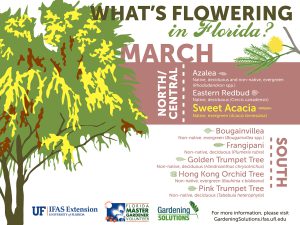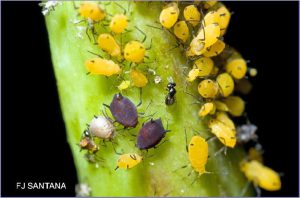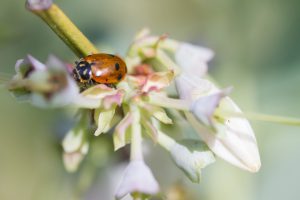How riotous the morning, draped in silver and pomegranate, new shoots gasping forth from soil tended carefully. Buds on branches swell and burst with leaves fresh and trembling in their newness. A haze of moisture in the morning air left staggering in the balmy afternoon.
Spring is Here, and So are the Bugs
The month of March ushered in the official start of Spring in southwest Florida, leaving many wondering whether we had skipped directly from winter to summer. The slow march of our vegetable gardens over the fall and winter months are now reaching their peak, harvesting carrots, beets, tomatoes, and the like to fill our bellies and our souls. Many of our garden beds are now awaiting their summer installations of collards, sweet potatoes, okra, some lingering cherry tomatoes, and other warmer weather crops. Our landscapes are singing with new growth, both leaf and flower.

With the new succulent growth of spring, comes the attentive and ravenous insects hoping to find their bellies swelling. Watch for aphids, small black, green, yellow, or orange pear-shaped insects that love to feast on the newest green growth. They use a specialized mouthpart which pierces the plant and acts like an artesian well, with the plant doing the work to pump the sugary sap into the aphid. These little voracious visitors can stunt leaf growth, distort new flower buds, or stymie the progression from flower to fruit.
Thankfully, aphids feed a familiar and often-celebrated visitor to our gardens, the ladybird beetle or ladybug. Feasting on the fattened aphids, ladybugs are one predator that can provide natural control of aphids. Before you rush into your local garden center searching for something to spray to rid your plants of pests, consider a different approach. Insects operate in a delicate dance between predators and prey.

We can invite beneficial predatory insects into our landscapes by following these steps:
- Use insecticides sparingly, if at all, and always follow the label instructions.
- Plant a diversity of native and flowering plants as well as landscape ornamentals and vegetables.
- Provide complexity of habitat using groundcovers, grasses, shrubs, small trees, large trees, and flowering plants.
- Follow integrated pest management methods, by first correctly identifying the pest, then developing an appropriate plan for management with the least toxic option used first.
Spend some time observing your plants this spring, watch for the emergence of one pest, followed by the predator, don’t sweep away those spider webs (spiders eat everything!) and if the aphids are getting ahead of your predators, you can always spray them with a jet of water to knock them down. Aphids are only one pest insect for which to be on the lookout this spring. Contact your local county extension office for assistance in identifying pest insects and their management methods.
Check out these resources for more information:
https://blogs.ifas.ufl.edu/pascoco/2019/02/15/aaaahhhh-aphids/
https://gardeningsolutions.ifas.ufl.edu/care/pests-and-diseases/pests/thrips.html
https://sfyl.ifas.ufl.edu/lawn-and-garden/ladybugs-in-florida/
https://blogs.ifas.ufl.edu/monroeco/2021/06/04/the-ways-insects-benefit-our-yards/
 0
0
